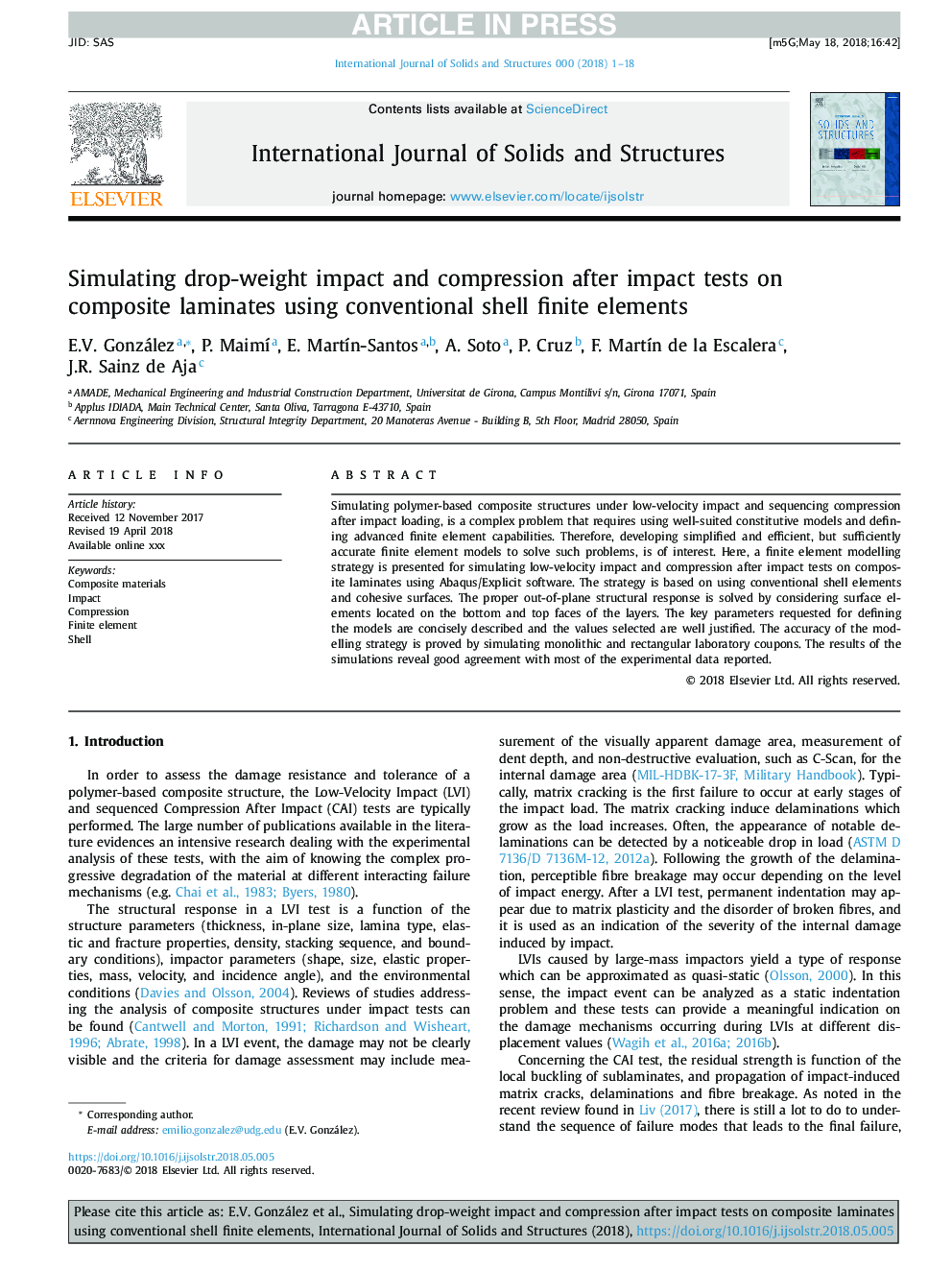| Article ID | Journal | Published Year | Pages | File Type |
|---|---|---|---|---|
| 6748276 | International Journal of Solids and Structures | 2018 | 18 Pages |
Abstract
Simulating polymer-based composite structures under low-velocity impact and sequencing compression after impact loading, is a complex problem that requires using well-suited constitutive models and defining advanced finite element capabilities. Therefore, developing simplified and efficient, but sufficiently accurate finite element models to solve such problems, is of interest. Here, a finite element modelling strategy is presented for simulating low-velocity impact and compression after impact tests on composite laminates using Abaqus/Explicit software. The strategy is based on using conventional shell elements and cohesive surfaces. The proper out-of-plane structural response is solved by considering surface elements located on the bottom and top faces of the layers. The key parameters requested for defining the models are concisely described and the values selected are well justified. The accuracy of the modelling strategy is proved by simulating monolithic and rectangular laboratory coupons. The results of the simulations reveal good agreement with most of the experimental data reported.
Related Topics
Physical Sciences and Engineering
Engineering
Civil and Structural Engineering
Authors
E.V. González, P. MaimÃ, E. MartÃn-Santos, A. Soto, P. Cruz, F. MartÃn de la Escalera, J.R. Sainz de Aja,
